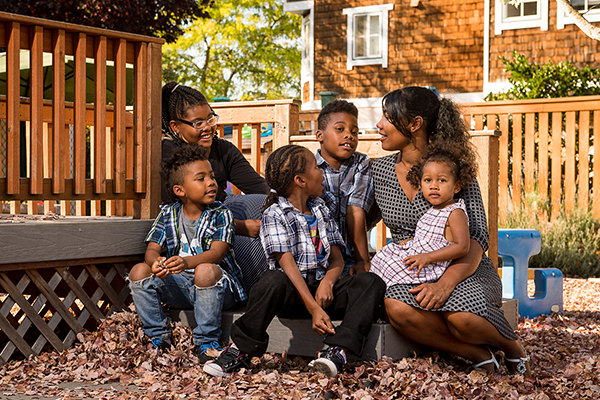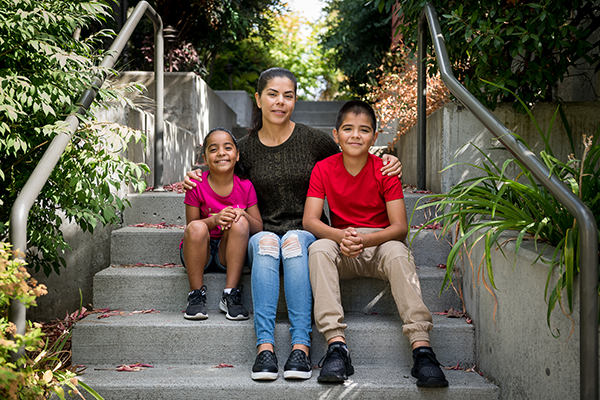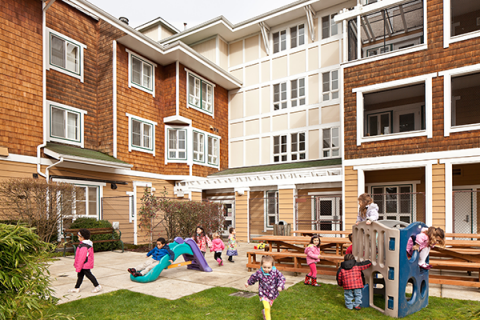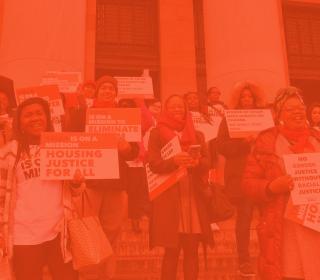We talk a lot about ending homelessness here at Firesteel, and in King County as a whole. What we don’t always talk about is how to stop people from becoming homeless in the first place. If we moved each and every person sleeping in their car, on the street, or in a motel right now into an safe home, we would have about two weeks of no homelessness, and we’d have a homelessness crisis again six months later. That’s because a whole new group of folks would have become homeless in that time.
While this might feel overwhelming to think about, it actually should give us hope, because if we can cure the social ills pushing folks into homelessness, we will be able to stop treating only the symptoms of those ills and actually begin to end homelessness.
Two new programs in King County are focused on upstream solutions to homelessness; King County’s Best Starts for Kids, and the City of Seattle’s Bridge into Homes for All.
Best Starts for Kids

The Best Starts for Kids levy was passed by voters in 2015, and 2017 was the first year that the funds were granted. Although the levy funds a wide variety of programs to help children, its homelessness prevention program alone involves about two dozen nonprofits, providing a wide geographic reach across the county. Last year the program successfully prevented 4,000 people from becoming homeless, 2,500 of who were children under the age of 18.
Best Starts for Kids works by providing flexible funding for the particular challenges facing a family who is on the brink of homelessness. This "individualized approach" means that some families get rental assistance, while others get help with transportation costs. Other participants asked for help getting a new job to be able to continue paying the rent. Part of what makes this program effective is that it begins by asking participants what it is that they need. By centering the experience and knowledge of the people impacted, the program is flexible to match what will work best for that particular family.
Seattle Rental Housing Assistance Pilot
Announced by Mayor Jenny Durkan in March of this year, the Seattle Rental Housing Assistance program is a two-year pilot to give rental assistance to people waiting for housing vouchers. The pilot will provide about 1,000 families in Seattle with assistance paying their rent while they wait to receive their federal housing vouchers. And that wait is long. The Seattle Housing Authority (SHA) has a waiting list so long that it is expected to take three years for it to fully clear out. In fact, SHA isn't even accepting new people onto the waitlist while the backlog is being sorted out.
Folks who are on these waitlists are extremely vulnerable to falling into homelessness. If they are left unsupported by our city for two years in a vicious housing market where rent is always on the rise, many will be homeless by the time their first voucher is issued.
Why homelessness Prevention?
Homelessness prevention programs are important because they save people who would otherwise become homeless from the trauma they would have experienced in homelessness. And that has huge impacts on their ability to take part in the workforce, be successful students, and thrive in our society. It also saves public dollars that are desperately needed.
A study released by the Central Florida Commission on Homelessness found that housing homeless individuals was three times cheaper than leaving them on the street. The report showed that it annually cost the county $31,000 per homeless person in police pay for ticketing and arresting them just for being homeless. To instead house each homeless person and assign them a full-time caseworker cost only $10,000.
The money that our government saves from prevention can then be spent on the priorities that we all care about, like education and child care. Money can instead be directed towards building affordable housing, which will help solve another upstream cause of homelessness.

Preventing homelessness is about ensuring that the factors that lead to people being pushed out of their home are successfully mitigated. This can take many forms, as there are many entry points into homelessness. Rent assistance is a powerful one precisely because rising rents are a large factor in increased homelessness. But other preventative measures focus on foster care, where many youth “age out” of the system and wind up homeless. The Mockingbird Society does great work advocating for upstream solutions to this particular problem.
To truly end homelessness we must incorporate preventative solutions like Best Starts for Kids and the Seattle Rental Housing Assistance program. For the social and personal cost of those experiencing homelessness or on the brink of falling into it, it is never more true that an "ounce of prevention is worth a pound of cure."

Eric Bronson is the Digital Advocacy and Engagement Manager at YWCA. He manages the Firesteel blog in addition to its social media streams and action initiatives. A graduate of Oberlin College, Eric focuses on the intersection of race and gender within the American political economy.
We tell the stories of those with lived experiences of racism and sexism and invite supporters to take concrete actions to correct the root causes of disparity in our communities.

